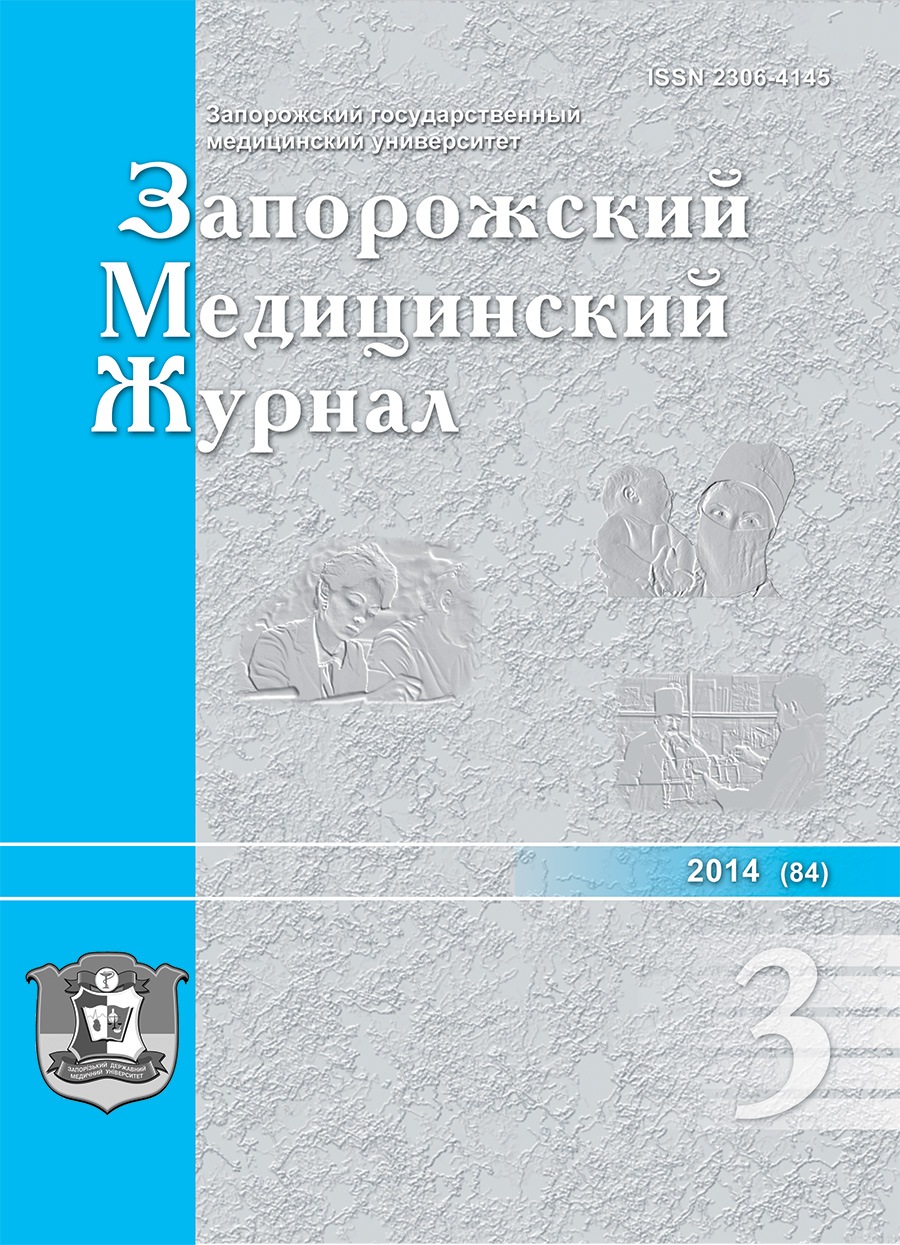Vascular calcification and plasma levels of osteopontin in patients with chronic kidney disease who are treated by program hemodyalisis
DOI:
https://doi.org/10.14739/2310-1210.2014.3.25986Keywords:
Сhronic Renal Insufficiency, Renal Dialysis, Vascular Calcification, OsteopontinAbstract
Aim. To examine vascular calcification and plasma levels of osteopontin in patients with chronic kidney disease who are treated by program hemodyalisis
Methods and results. 53 patients were treated by renal hemodialysis. In this population the prevalence of abdominal aortic calcification was established using X-ray radiography. In 20 of them multislice computer tomography was conducted. There was a positive correlation between vascular calcification and phosphate levels, phosphate - calcium product. Plasma level of osteopontin in hemodialysis patients was significantly higher than in patients with predialysis stages of chronic kidney disease.
Conclusion. Positive correlation between plasma levels of citokine and abdominal aortic calcification may indicate that osteopontin is a marker of vascular calcification in patients, who are treated by program hemodialysis.
References
Barreto, D. V., Lenglet, A., Liabeuf, S., Kretschmer, A., Barreto, F. C., & Nollet, A. (2011) Prognostic implication of plasma osteopontin levels in patients with chronic kidney disease. Nephron Clin Pract, 117(4), 363–372. doi: 10.1159/000321520.
Choi, S. T., Kim, J. H., Kang, E., Lee, S., Park, M., Park, Y., et al. (2008). Osteopontin might be involved in bone remodelling rather than in inflammation in ankylosing spondylitis. Rheumatology, 47(12), 1775–1779. doi: 10.1093/rheumatology/ken385.
Covic, A., Kanbay, M., Voroneanu, L., Turgut, F., Serban, D.N., Serban, I. L., & Goldsmith, D. J. (2010) Vascular calcification in chronic kidney disease. Clin Sci (Lond), 119, 111–121. doi: 10.1042/CS20090631.
Coen, G., Gallucci, M. T., Balducci, A., Pierantozzi, A., Mantella, D., Manni, M., et al. (2007). Are PTH serum levels predictive of coronary calcifications in haemodialysis patients?. Nephrology Dialysis Transplantation, 22(11), 3262–3267. doi: 10.1093/ndt/gtm370.
Glynn, L. G., Glynn, D. R., Newell, J., Hinde, J., Buckley, B., & Murphy, A. W. (2007) Cronic kidney disease and mortality and morbidity among patients with established cardiovascular diseasе: a West of Ireland communiti-based cohort study. Nephrol. Dial. Transplant, 22(9), 2586–2594.
Grau, J. B., Acker, M. A., Bavaria, J. E., Field, B. C., Branchetti, E., Seefried, W. F., et al. (2012). Analysis of Osteopontin Levels for the Identification of Asymptomatic Patients With Calcific Aortic Valve Disease. The Annals of Thoracic Surgery, 93(1), 79–86.
Sainger, R., Grau, J. B., Poggio, P., Branchetti, E., Bavaria, J. E., Gorman, J. H., et al. (2012). Dephosphorylation of circulating human osteopontin correlates with severe valvular calcification in patients with calcific aortic valve disease. Biomarkers, 17(2), 111–118. doi: 10.3109/1354750X.2011.642407.
Fatherazi, S., Matsa-Dunn, D., Foster, B. L., Rutherford, R. B., Somerman, M. J., & Presland, R. B. (2009). Phosphate Regulates Osteopontin Gene Transcription. Journal of Dental Research, 88(1), 39–44. doi: 10.1177/0022034508328072.
Fujisawa, R., & Tamura, M. (2012) Acidic bone matrix proteins and their roles in calcification. Front Biosci., 1(17), 1891–1903.
Kalpakian, M. A., & Mehrotra, R. (2007). Vascular Calcification and Disordered Mineral Metabolism in Dialysis Patients. Seminars in Dialysis, 20(2), 139–143. doi:10.1111/j.1525-139X.2007.00261.x.
Karakan, S., Sezer, S., Acar, F., & Haberal, M. (2011). Circulating Levels of Osteopontin Are Related With Calcification Parameters in Patients With Renal Transplantations. Transplantation Proceedings, 43(2), 562–564. doi: 10.1016/j.transproceed.2011.01.026
(2009) KDIGO. Clinical Practice Guideline for the Diagnosis, Evaluation, Prevention, and Treatment of CKD-MBD. Kidney Int., 76(113), 1–130.
Noordzij, M., Krediet, R. T., Engelsman, L. F., Cranenburg, E. M., Korevaar, J. C., Schurgers, L. J., et al. (2011). Progression of aortic calcification is associated with disorders of mineral metabolism and mortality in chronic dialysis patients. Nephrology Dialysis Transplantation, 26(5), 1662–1669. doi: 10.1093/ndt/gfq582.
Lorenzen, J., Krämer, R., Kliem, V., Bode-Boeger, S. M., Veldink, H., Haller, H., et al. (2010). Circulating levels of osteopontin are closely related to glomerular filtration rate and cardiovascular risk markers in patients with chronic kidney disease. European Journal of Clinical Investigation, 40(4), 294–300. doi: 10.1111/j.1365-2362.2010.02271.x.
Uaesoontrachoon, K., Yoo, H., Tudor, E. M., Pike, R. N., Mackie, E. J., & Pagel, C. N. (2008). Osteopontin and skeletal muscle myoblasts: Association with muscle regeneration and regulation of myoblast function in vitro. The International Journal of Biochemistry & Cell Biology, 40(10), 2303–2314. doi: 10.1016/j.biocel.2008.03.020.
Downloads
How to Cite
Issue
Section
License
Authors who publish with this journal agree to the following terms:
Authors retain copyright and grant the journal right of first publication with the work simultaneously licensed under a Creative Commons Attribution License that allows others to share the work with an acknowledgement of the work's authorship and initial publication in this journal. 
Authors are able to enter into separate, additional contractual arrangements for the non-exclusive distribution of the journal's published version of the work (e.g., post it to an institutional repository or publish it in a book), with an acknowledgement of its initial publication in this journal.
Authors are permitted and encouraged to post their work online (e.g., in institutional repositories or on their website) prior to and during the submission process, as it can lead to productive exchanges, as well as earlier and greater citation of published work (See The Effect of Open Access)





